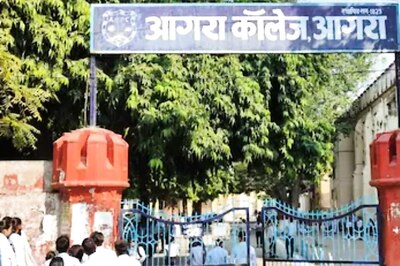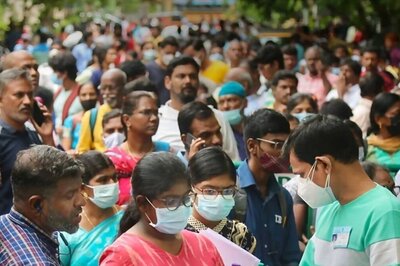
views
Lucknow: The Samajwadi Party’s vision document released by its president Akhilesh Yadav on Friday has come as the final manifestation of the political narrative that both the SP and the BS had set out to work on vigorously after their electoral humiliation in the assembly elections of 2017 - the narrative of backward castes, Dalits and minorities against the upper castes.
This narrative is based in arithmetic as it pits 85 per cent “have nots” or socially deprived people against 15 per cent of the socially privileged classes. It was also the reason why the SP, and particularly BSP, were unwilling to include the Congress in its grand alliance in UP.
When political circles were still abuzz over the possibilities of a larger alliance, senior SP leaders had told News18, “Congress doesn’t fit in the political narrative we want to build against the BJP - narrative of 85 per cent vs the 15 per cent. That is socially oppressed castes and minorities against the upper castes.”
A lot of foundation behind this analysis were arrived at through experiences of the SP-Congress alliance in 2017 polls. The consensus was that the Congress votes, which was basically from upper caste Hindus, did not transfer to the SP. It further gave BJP an opportunity to portray the two parties as opportunists.
But even before this failed alliance, both BSP and the SP had slowly started to realise that politics in the state is undergoing a sea change. Upper caste Hindus had almost entirely sided with the BJP in the 2014 Lok Sabha polls and the 2017 state elections. A large chunk of Dalit and OBC votes were also dented by the saffron party.
For both Akhilesh and Mayawati, it was a moment to reflect. The analysis was clear - gone were the days of experimenting with rainbow collations like “Upper castes and Dalits”- the combination that had propelled Mayawati to power in 2007, or just try to override the caste faultlines by over playing “Brand Akhilesh”.
Along with this, there was also a realisation about downplaying the “minority appeasement” card. Post 2017, both Akhilesh and Mayawati had moved very cautiously as far as their approach towards addressing the minority voters was concerned.
From being often referred to as a party of ‘Mullah Mualayam’, Akhilesh very carefully moved ahead ensuring minimum opportunity to the BJP of accusing them of minority appeasement.
A reflection of this idea could be seen in the fact that SP-BSP alliance has given a Lok Sabha ticket to only a handful of Muslim candidates on 80 seats of Uttar Pradesh. Only four Muslim candidates have been fielded on the 16 seats of west UP that go to polls in phase one and two.
As a deliberate move, both these two leaders have also kept a low profile campaign in West UP, with an intent to avoid giving BJP any chances of communal polarisation in the sensitive region.
This long formulated political discourse has now finally seen a clear reflection in Samajwadi Party’s vision document. The document says “The BSP-SP-RLD Gathbandhan represents the most oppressed sections of the society”.
It further goes on to say “The privileged dismiss us as casteist. The elite and rich dismiss us as power hungry. These are all lies... the fact is that India is perhaps the most unequal country in the world. In fact the richest 10 percent of the population (uniformly the upper castes) owns more than 60 percent of India’s wealth”
These opening lines of the document prove beyond doubt that for the near future, the two prominent caste-based parties are convinced about political alienation of the upper castes. Hence, they have diverted to their original political formula of identity politics.
This shift to basic core political fundamentals may not be that aggressive like initial days of BSP’S emergence and Dalit assertion or Mandal days and emergence of OBC politics. But in their implementation, the two regional heavy weights will clearly be guided by the new caste political realities on the ground.


















Comments
0 comment